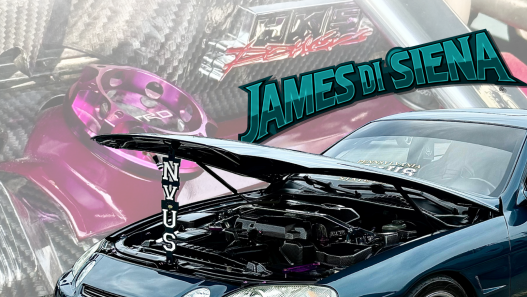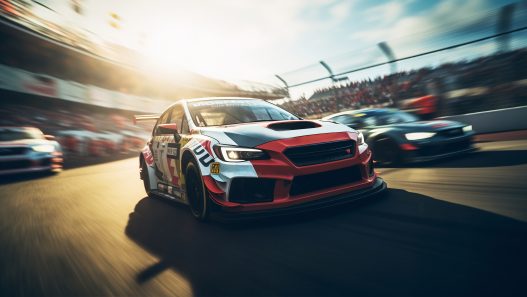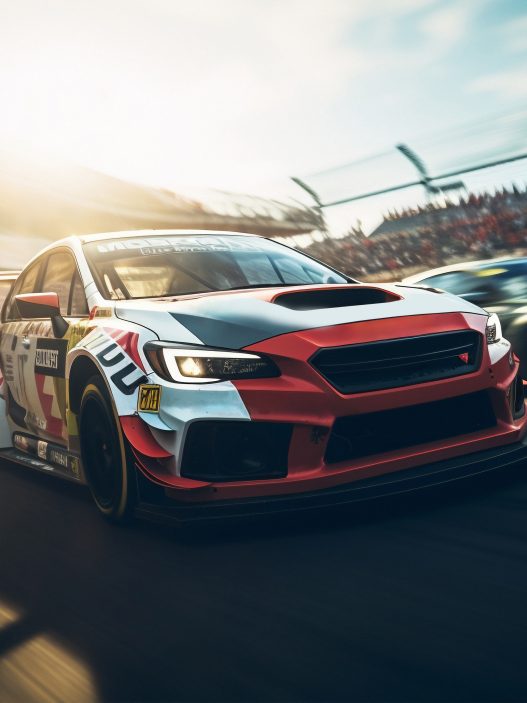The Porsche 911 GT3 (992.2) Rewrites the Nürburgring Record Book
The Nürburgring Nordschleife. A name that resonates with a mix of reverence and fear among automotive enthusiasts and engineers alike. This sprawling circuit, carved into the Eifel mountains of Germany, is far more than just a racetrack; it is a crucible of performance, a brutal testing ground where the mettle of both machine and driver is pushed to the absolute breaking point. For decades, setting a fast lap time on the ‘Ring has been the ultimate badge of honor for sports car manufacturers, a quantifiable metric of a vehicle’s dynamic capabilities. While the headline-grabbing overall production car records often belong to multi-million dollar hypercars equipped with the most advanced, lightning-fast automatic transmissions, a different, perhaps more soulful, benchmark exists: the manual transmission lap record. This particular challenge speaks directly to the heart of driving purists, celebrating the direct connection between human and machine. And now, a new chapter has been written in this storied history, as the updated Porsche 911 GT3 (992.2) has reportedly stormed the Green Hell to claim a new manual Nürburgring lap record. This achievement is not just about raw speed; it’s a powerful statement about engineering excellence, driver engagement, and the enduring appeal of the manual gearbox in the realm of high performance. This article delves deep into the significance of this record, exploring the legend of the Nürburgring, the illustrious history of the Porsche 911 GT3, the specifics of the record-breaking car, and what this feat means for the future of driver-focused sports cars.
The Legend of the Nürburgring Nordschleife: The Ultimate Proving Ground
To truly appreciate the significance of a Nürburgring lap record, one must first understand the nature of the circuit itself. Opened in 1927, the Nordschleife (North Loop) was originally part of a much larger complex designed to showcase German automotive engineering and provide a challenging venue for racing. Its sheer scale and difficulty quickly earned it the nickname “Green Hell” from legendary Formula 1 driver Jackie Stewart. Spanning approximately 12.9 miles (20.8 kilometers), the track winds its way through forests and over hills, featuring over 70 corners (some estimates put it closer to 150, depending on how you count), dramatic elevation changes of around 1,000 feet (300 meters), and a variety of surface textures. Unlike modern, purpose-built circuits with vast run-off areas, the Nordschleife is lined with trees, armco barriers, and steep drops, leaving little margin for error. It is a track that punishes mistakes severely and demands unwavering concentration, precise inputs, and a car with exceptional balance, braking, and stability across a wide range of speeds and conditions.
For decades, manufacturers have used the Nürburgring as a crucial development and testing ground. Its diverse layout, encompassing everything from high-speed straights to tight hairpins and challenging technical sections, makes it ideal for evaluating a car’s chassis dynamics, suspension tuning, aerodynamic performance, and powertrain durability. A car that is fast and stable on the Nordschleife is likely to be a capable and confidence-inspiring machine on any road or track. Consequently, setting a fast lap time here has become a powerful marketing tool, a tangible demonstration of a vehicle’s performance credentials. There are various categories for lap records, including overall production car records, records for specific drivetrain layouts (FWD, RWD, AWD), and, importantly for enthusiasts, records based on transmission type.
The Porsche 911 GT3 Lineage: A History Forged on the Track
The Porsche 911 GT3 is not just another variant of the iconic 911; it is a car born from motorsport, a direct descendant of Porsche’s racing programs. Introduced with the 996 generation in 1999, the GT3 was conceived as a homologation special for Porsche’s GT racing efforts, stripping away luxury features and focusing purely on performance, weight reduction, and track capability. It quickly established itself as the purist’s choice within the 911 lineup.
Each subsequent generation of the GT3 – the 997, the 991.1, and the 991.2 – has built upon this foundation, refining the core recipe while incorporating technological advancements. Key characteristics have remained consistent: a high-revving, naturally aspirated flat-six engine (a rarity in an age of turbocharging), sophisticated aerodynamics featuring prominent rear wings, track-tuned suspension systems, powerful braking, and a focus on direct, unfiltered driver feedback. The GT3 is designed to be driven hard, to communicate every nuance of the road surface and the car’s behavior directly to the driver.
Crucially, throughout its history, Porsche has offered a manual transmission option for the GT3, alongside their rapid PDK dual-clutch gearbox. While the PDK is undeniably faster in terms of raw lap times due to its quicker shifts, the manual transmission has remained a popular choice among enthusiasts who prioritize the tactile involvement and control it provides. This commitment to offering a manual gearbox in their most track-focused 911 has cemented Porsche’s reputation as a brand that understands and caters to the desires of passionate drivers. The GT3 has been a frequent visitor to the Nürburgring, with each generation being thoroughly tested and often setting impressive lap times, further solidifying its legend on the Green Hell.
Introducing the Porsche 911 GT3 (992.2): The Evolution Takes the Crown
The automotive world eagerly anticipates updates to legendary models, and the refresh of the 992 generation of the Porsche 911 is no exception. The Porsche 911 GT3 (992.2) represents the mid-cycle evolution of the current GT3, incorporating refinements and enhancements based on Porsche’s ongoing development and motorsport learnings. While specific details of the 992.2’s updates might vary, typical areas of focus for a GT car refresh include subtle tweaks to the naturally aspirated engine for potentially more power or improved response, aerodynamic refinements to increase downforce or reduce drag, suspension tuning for even sharper handling, and updates to the car’s technology and interior features.
What is particularly exciting for enthusiasts is the continued availability of the manual transmission in the 992.2 GT3. In an automotive landscape where manual gearboxes are becoming increasingly rare, especially in high-performance segments, Porsche’s dedication to offering this option is commendable. The manual gearbox in the GT3 is renowned for its precise action and satisfying engagement, allowing the driver to feel intimately connected to the powertrain. It is this specific transmission, paired with the updated capabilities of the 992.2 GT3, that has now reportedly claimed the new manual transmission Nürburgring record.
While the exact specifications of the record-setting car would be a standard production version, the combination of the 992.2’s likely aerodynamic improvements, chassis refinements, and potentially minor powertrain enhancements, all working in harmony with the driver’s inputs through the manual gearbox, contributed to this remarkable achievement. It’s a testament to how even subtle updates to an already exceptional platform can yield significant performance gains.
The Record-Breaking Lap: Deconstructing Manual Prowess
The news that the Porsche 911 GT3 (992.2) has set a new manual Nürburgring lap record is a major headline in the automotive world. While the precise lap time needs to be officially confirmed, the fact that it has surpassed the previous benchmark for a manual car on the Nordschleife is the key takeaway. [If the exact time is confirmed, insert it here and discuss how it compares to the previous manual record holder, highlighting the improvement]. This achievement underscores the incredible performance potential that can still be unlocked with a manual transmission in a perfectly optimized machine like the GT3.
Setting a fast lap on the Nürburgring with a manual gearbox adds an extra layer of complexity and skill for the driver. Unlike a dual-clutch system that executes shifts with lightning speed and perfect precision every time, a manual requires the driver to manage clutch engagement, gear selection, and rev-matching while simultaneously navigating the challenging circuit at high speed. The driver’s ability to execute smooth, timely shifts without upsetting the car’s balance is crucial for maintaining momentum and setting a fast time. The reported Nürburgring manual record by the 992.2 GT3 speaks volumes about the skill of the driver [mention driver’s name if known] and the forgiving yet responsive nature of the car’s manual transmission and overall dynamics.
This record is particularly impressive when considering the sheer speed and efficiency of modern automatic transmissions. While the PDK-equipped GT3 would likely still be faster in a straight head-to-head lap time comparison due to its inherent shifting speed advantage, the manual record demonstrates that the gap, while present, doesn’t diminish the manual car’s ability to perform at an elite level. It highlights that driver skill and engagement can compensate significantly, and that the manual GT3 is a seriously capable performance car in its own right.
The Enduring Appeal of the Manual Transmission
Why does the manual transmission continue to hold such a special place in the hearts of automotive enthusiasts, even in the face of faster automatic alternatives? It boils down to connection, control, and engagement. Operating a manual gearbox creates a direct mechanical link between the driver and the engine. The act of depressing the clutch, selecting a gear, and releasing the clutch to transfer power provides a tactile and auditory feedback loop that is simply absent in most automatics.
Furthermore, a manual transmission gives the driver ultimate control over gear selection. While modern automatics are incredibly sophisticated, there are times when a driver might want to hold a gear longer, short-shift, or downshift earlier than the computer might predict. This level of control allows the driver to feel more intimately involved in the driving process, making the experience more rewarding and immersive. For many, the satisfaction of executing a perfect heel-toe downshift or smoothly accelerating through the gears is an integral part of the driving pleasure.
Porsche’s continued commitment to offering a manual option in the GT3, and the fact that this manual version has now set a significant Nürburgring lap record, reinforces the idea that there is a strong and dedicated market for driver-focused cars that prioritize engagement alongside performance. It’s a nod to the purists and a celebration of the art of driving.
A Statement on Modified Lifestyle and Performance
The Porsche 911 GT3 (992.2) setting a new manual transmission Nürburgring record is more than just a number on a stopwatch; it’s a statement. It solidifies the 992.2 GT3‘s position as one of the most desirable and capable sports cars available today, particularly for those who value the manual driving experience. This record will undoubtedly become a key talking point in discussions about the car’s performance and its place in the pantheon of Nürburgring greats.
For the “Modified Lifestyle” community, this achievement resonates deeply. It speaks to the passion for performance, the dedication to refining machinery, and the pursuit of pushing boundaries. While the GT3 is a factory-built performance machine, the spirit behind its development – the relentless pursuit of improvement and the focus on driver connection – aligns perfectly with the ethos of modifying vehicles to enhance their capabilities and tailor them to individual preferences. This record celebrates the potential that can be unlocked when engineering excellence meets driver skill, a core tenet of the modified lifestyle. It also highlights that even in a world of increasing automation, there is still immense value and capability in direct mechanical control.
The Manual GT3 Reigns Supreme on the Green Hell
The Porsche 911 GT3 (992.2) has etched its name into the history of the Nürburgring Nordschleife by claiming the manual transmission lap record. This remarkable achievement is a testament to the car’s exceptional engineering, the skill of the driver, and Porsche’s unwavering commitment to building driver-focused performance cars.
In a world where the manual gearbox is becoming a rarity, the 992.2 GT3 stands tall as a beacon of driver engagement, proving that the tactile satisfaction and control of shifting gears manually can still coexist with blistering track performance. The Green Hell has met its new manual master, and the Porsche 911 GT3 (992.2) has delivered a powerful message: the thrill of the manual drive, and the pursuit of performance through direct connection, are alive and well. This lap record is more than just a time; it’s a celebration of the art of driving and the enduring appeal of one of the greatest sports cars ever made.






















